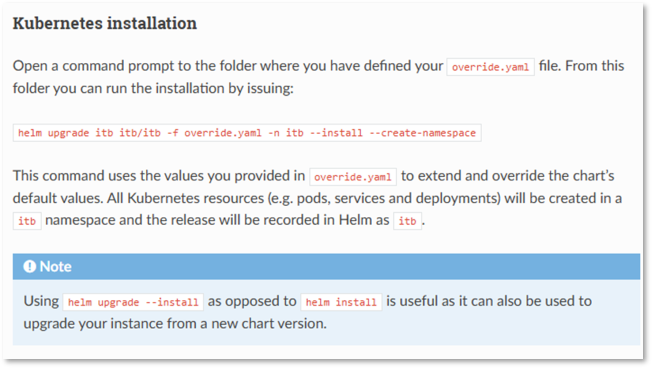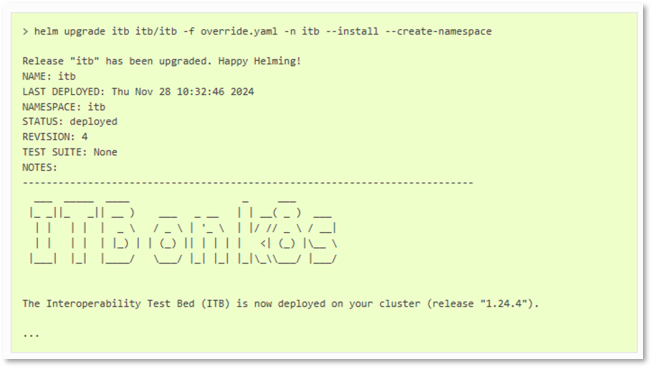
Starting with release 1.24.4, the Interoperability Test Bed provides official support for use of Kubernetes to deploy on-premise instances.

The Interoperability Test Bed provides conformance testing solutions that can be used as-a-service, and also as components to install on-premise. Although the as-a-service model offers an attractive option due to its availability and ease of use, more and more organisations choose to run on-premise instances to have full operational control of their services.
The Test Bed’s validators, flexible components that can be used to validate RDF, XML, JSON or CSV data, have long supported on-premise deployments via several approaches, including use of Docker, Kubernetes or direct use of binary packages. Such options have however been more limited for the GITB Test Bed software, the Test Bed’s flagship conformance testing solution, where on-premise installation has been supported only via Docker. Docker can well be used to operate production-grade services, but has given way in recent years to Kubernetes as the Industry-standard way of deploying containerised software. Using Kubernetes simplifies the management of complex deployments, providing fine-grained control over aspects such as scalability, redundancy and resource management in multi-node clusters.
As of release 1.24.4 the Test Bed provides official support for Kubernetes, ensuring its streamlined installation, operation and management on Kubernetes clusters. This support comes with published Kubernetes manifest files that can be used as-is, but also a public Helm chart and chart repository that can be used to install the Test Bed with the Helm package manager. Helm is a tool for configuring and installing multi-container services on Kubernetes, and is now the advised way of making a Kubernetes-based Test Bed installation.
Using Helm, installing the Test Bed on your Kubernetes cluster can be as simple as issuing a single command:
helm install itb itb --repo https://www.itb.ec.europa.eu/helm
The installation and update process for Kubernetes is fully documented in the Test Bed’s production installation and upgrade guide. These guides cover the default configuration provided out-of-the-box, as well as the necessary settings to be configured for a production instance.


It is interesting to mention that using Docker remains a fully valid and supported approach both in development and in production. Even when choosing to use Kubernetes for a production instance, use of Docker provides a complementary approach for development and test environments, given its simplicity and lightweight footprint.
The Test Bed’s support for Kubernetes will continue to evolve in the future, onboarding latest community best practices and feedback from users’ operations teams. The goal is to ensure that managing your Test Bed instance on-premise remains as simple as possible, while ensuring robust operations.
If you are new to Kubernetes and Helm, you can find a wealth of information in their respective online documentation. Regarding the Test Bed itself, general details on its services and other use cases can be found in the Interoperable Europe Portal, with its value proposition being a good starting point for newcomers. To receive updates on Test Bed news and releases remember to subscribe to the Test Bed on the Portal, and to follow Interoperable Europe’s updates on X and LinkedIn.
The Interoperability Test Bed is a service provided by the European Commission’s DIGIT, offering conformance testing and validation solutions in support of IT systems’ cross-border interoperability.
Referenced solution


